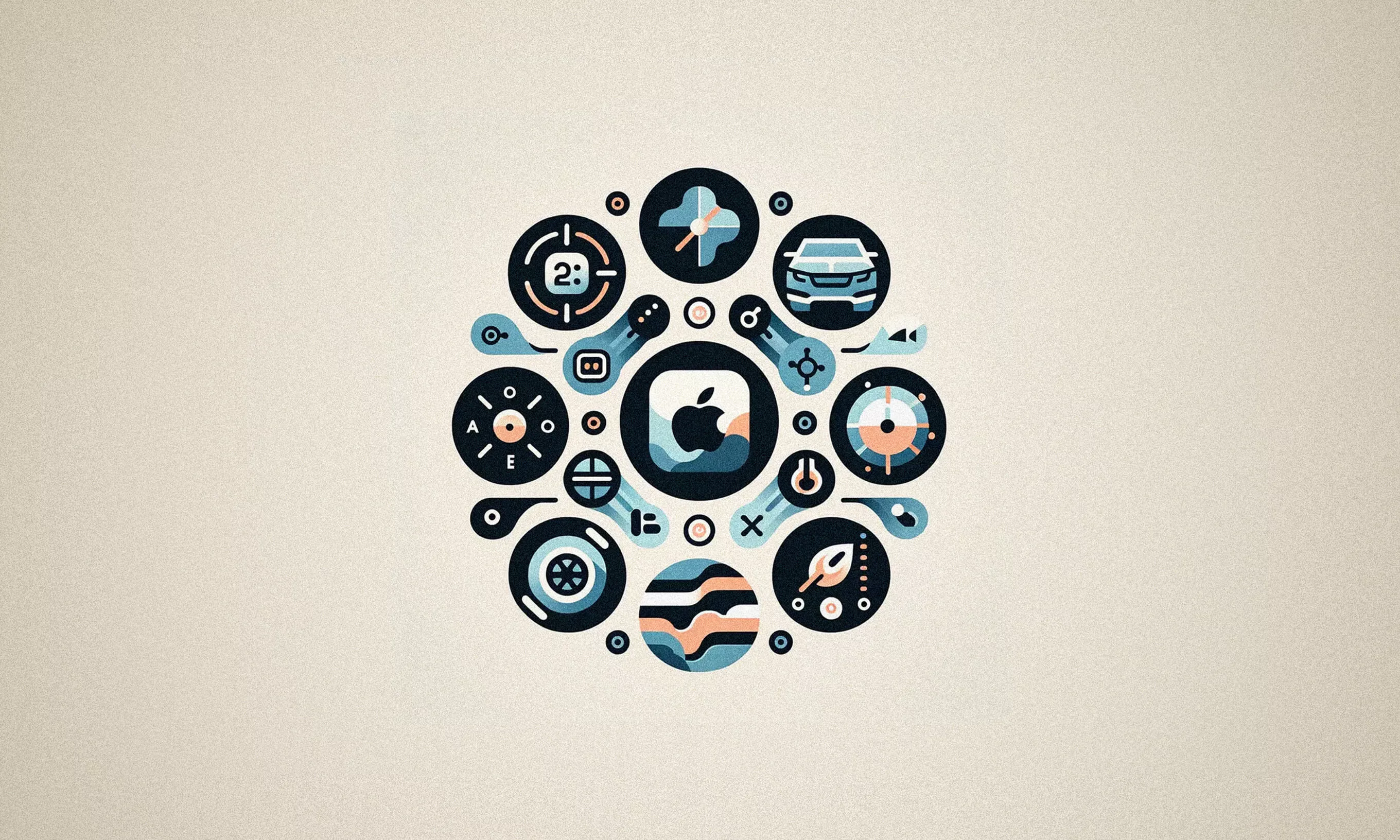As automakers, software developers, and users eagerly await the new CarPlay update, we take a look at the exciting possibilities and the challenges that it presents to the automotive industry.
In the past decade, in-vehicle technology has gone through a massive evolution, and Apple’s CarPlay has already played a key role in this journey. Starting out as just a simple interface for accessing phone applications while driving, CarPlay has now become an integral part of the automotive experience.
The upcoming next-generation CarPlay is set to debut in 2024. Judging by the announcements, it will be another big leap forward – Apple is promising an even deeper integration into vehicle functions and more personalized user experiences.
While we await the launch of the new CarPlay update, we explore the potential UX and engineering challenges and opportunities likely to arise in this next phase of CarPlay’s evolution. We’ll also take a look at some broader trends likely to influence its future development.
New CarPlay update brings features galore
The array of innovative features announced for the new CarPlay update goes far beyond the traditional scope of in-car infotainment systems. According to MacRumors, this update will include eight new apps, each designed to enhance the interaction between the driver and the vehicle.
The apps range from Auto Settings, managing paired iPhones and allowing for the adjustment of vehicle settings, to Car Camera, displaying the vehicle’s rear-view camera feed. Other notable additions include Charge for electric vehicles, Climate for accessing a vehicle’s climate controls within CarPlay, and Tire Pressure for monitoring the air pressure of each tire.
These advancements mark a shift in CarPlay’s role. Marketed as the ultimate iPhone experience for the car, they present a transition from a mere interface for phone apps to a more comprehensive vehicle control system. This evolution will likely present unique opportunities and challenges in both UX and engineering realms, potentially reshaping the way drivers interact with their vehicles.
UX challenges and opportunities
Adapting UX design for diverse vehicle interfaces
As Apple CarPlay expands into various vehicle models, one of the main challenges is designing a user interface that adapts to different screen sizes and layouts while maintaining consistency and familiarity. This requires a flexible design approach that takes into consideration various form factors without compromising on usability and aesthetic appeal.
Enhancing user interaction
To ensure a safe and efficient user experience, it’s very important to strike a balance between touchscreen and voice command functionalities. The next generation of CarPlay could further refine this balance, offering more intuitive and accessible ways of interaction. Customization and accessibility will also be key, allowing users to tailor their driving experience according to their preferences and needs.
Integrating with vehicle-specific features
Integrating Apple CarPlay with different car systems comes with its own set of challenges, as each vehicle brings a unique set of features and limitations. However, this also opens up opportunities for creating more personalized and immersive customer experiences where CarPlay works seamlessly with the vehicle’s native capabilities.
Engineering challenges and innovations
Software integration with vehicle hardware
Achieving compatibility with the diverse electronics of various vehicle models is a considerable engineering feat in itself. This requires managing real-time data from vehicle sensors and creating a platform that is both robust and adaptable to different hardware configurations.
Ensuring security and privacy
With connected vehicles, protecting user data becomes even more important. The engineering team must maintain high functionality while implementing robust security measures to prevent any data breaches. Balancing these two aspects is crucial both for user trust and system reliability.
Future-proofing and scalability
Future-proofing CarPlay design involves keeping an eye on the advancements in vehicle technology and ensuring scalability across different car models and manufacturers. This requires a forward-thinking approach, where the system is built not just for the present but also adaptable for future innovations.
Embracing emerging trends and technologies
We can’t talk about CarPlay’s future possibilities without considering the broader technological and automotive trends likely to influence it. In the very near future, we might be seeing some groundbreaking features in the car industry.
Integration with electric and autonomous vehicles
As the automotive industry is progressively shifting towards electric and autonomous vehicles, CarPlay’s role will probably evolve even further. Integrating with systems like advanced battery management and charging will be even more important for electric vehicles. And as autonomous driving technologies advance, CarPlay could take the lead role in the driverless experience, focusing more on entertainment, productivity, and vehicle control aspects.
Advanced personalization through AI
Artificial intelligence could easily be another avenue for enhancing CarPlay’s capabilities. With the help of agentic AI, CarPlay could learn from user behaviors, preferences, and patterns to make the user experience more tailored and intuitive. This could include personalized media recommendations or adaptive control layouts based on preferences and driving habits.
Augmented reality interfaces
The integration of AR into CarPlay could revolutionize the way drivers and passengers interact with their vehicles. AR could be used for dynamic navigation displays, safety feature enhancements, and even entertainment, providing a more immersive and interactive experience.
Connectivity and IoT Integration
As the Internet of Things continues to expand, CarPlay’s potential for connectivity with other devices and home systems could grow. This integration could enable seamless control and monitoring of smart home devices or even interaction with urban infrastructure for real-time traffic and parking solutions.
The road ahead for CarPlay
By leaning into new technologies and trends while navigating the associated challenges, CarPlay could easily not only enhance vehicle functionality but also redefine the relationship between drivers, passengers, and their vehicles.
For automakers and OEMs, CarPlay’s evolution is not just another tech upgrade but a strategic factor that influences how they design and market their vehicles. As we anticipate its debut in 2024, it’s clear that the CarPlay experience will continue to be a key driver in the industry’s journey toward more connected, personalized, and intelligent vehicles.










